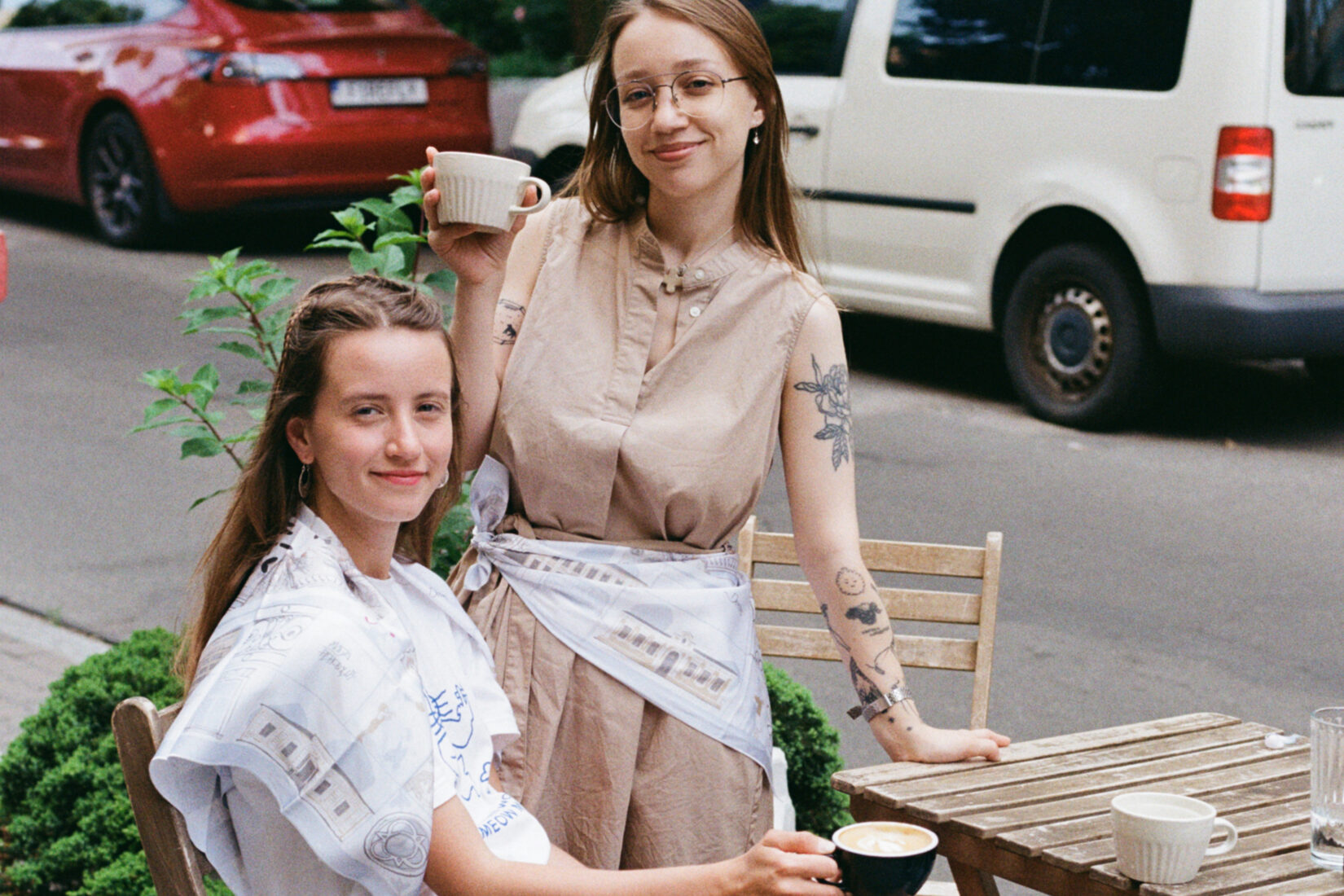When Daria Korba (together with Lisa Pasichnyk and Serhiy Yevtukhov) founded the organisation Map Renovation in Kyiv six years ago, it was driven by a firm belief that historic buildings are invaluable and require both commitment and innovative methods to be preserved. Not long after, Kseniia Paltsun joined the organisation, equally motivated by a passion for cultural heritage conservation. Over the past year, close collaboration with Architects Sweden through the SI-funded Baltpart project and the EU-funded Ureherit project has taken their work to new levels – with tangible results both locally and internationally.
From Database to Participatory Architecture
Kseniia, who comes from a family of architects and studied in a historic city, chose early on to focus on conservation issues. Daria, with a background in art and commercial architecture, found her passion in documenting and creating projects that activate abandoned buildings. Together with a programmer Serhii and architect Lisa, they created a database of abandoned culturally and historically significant buildings in Kyiv. An initiative that started from a complex database and sparked a series of projects, lectures, and preservation of historic buildings over the years.
The Saltworks in Drohobych – A Living Cultural Heritage
One of their most significant projects is the work on the saltworks in Drohobych – Ukraine’s oldest operating factory, dating back to the 14th century, and one of the oldest in Europe. Some of the factory’s buildings are still in use, while others are abandoned and in poor condition. Daria and Kseniia are collecting historical information to gain a comprehensive understanding. Through a memorandum of understanding between their organisation, and industry, they are contributing to the preservation of several historical buildings, many of which are in urgent need of restoration.
Swedish Collaborations – New Perspectives and Methods
Daria and Kseniia’s participation in the Baltpart and Ureherit projects with Architects Sweden have provided them with valuable insights. During study visits to Stockholm, Malmö, and Copenhagen, they observed how Swedish municipalities work with urban development, preservation, and citizen dialogue. Lectures, site visits, and discussions with Swedish restorers were not only inspiring – they also led to concrete collaborations with Architects Without Borders and Shared City on the saltworks and future projects.
Results: Impact, Partnerships, and Project Proposals
A tangible outcome of their involvement in the Architects Sweden project is that a key stakeholder in Drohobych was persuaded to abandon plans for privatising the saltworks and instead adopt a model based on collaboration with the local community. Additionally, Kseniia and Daria have enhanced their ability to write EU applications – they have already submitted two!
The HER City Method in Practice
The HER City method, introduced during the project, has become an important tool for Kseniia and Daria. It focuses on involving the community including marginalised groups in urban planning and renovation design in various ways.
“We saw in Malmö and Copenhagen how different stakeholders can be involved. The lecture series on participation was especially interesting – what works and what doesn’t. Various organisations shared their experiences, which was incredibly helpful.”
Memories That Shape the Future
A powerful memory from the project was a visit to a restored castle in Ivano-Frankivsk, where Daria discovered an alabaster stone – a symbol of the local cultural heritage. For Kseniia, a lecture in Copenhagen on the sustainable life cycle of buildings was particularly memorable: the realization that modernising historic buildings can be crucial for climate neutrality, rather than constructing new ones, became a source of inspiration to continue reconstructing historic buildings.
Long-Term Impact
The project has not only provided Daria and Kseniia with new tools and knowledge – it has also fostered a sense of community and inspiration. It shows that change takes time, but that perseverance, flexibility, and collaboration can lead to real impact. As Daria puts it:
“We often sit in our own bubbles, but here we went out and met new people, gained new knowledge and skills. That’s important for our work and future development.”
Facts
The Baltpart project has been funded through the SI Baltic Sea Neighbourhood Programme, which supports projects where Swedish organisations cooperate with organisations from EU countries around the Baltic Sea and countries in the EU’s Eastern Partnership to address cross-border challenges and opportunities. The aim of Baltpart was to facilitate an exchange around the HER City method for urban planning with Estonia and Ukraine.The project builds on a previous pilot project run by Architects Sweden. Interviews with project participants at that time revealed a significant need for training to increase citizen participation — with consideration for gender equality, age diversity, and vulnerable groups such as war veterans with disabilities and migrants.
In parallel with Baltpart, Architects Sweden is also running the European project Ureherit, Architects for Heritage in Ukraine. Its purpose is to create a platform for collaboration between Ukrainian and European architects in the reconstruction of Ukraine, and to view cultural heritage as a resource in that work. The project is funded by the EU’s Creative Europe programme.
